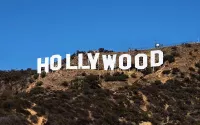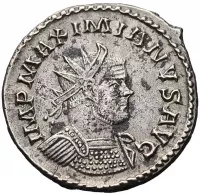The First Amendment to the U.S. Constitution, ratified in 1791 as part of the Bill of Rights, safeguards fundamental freedoms. It prohibits Congress from establishing a religion or impeding its free exercise, protecting both religious freedom. Furthermore, it guarantees freedom of speech, freedom of the press, the right to assemble peacefully, and the right to petition the government for grievances. These protections are essential for a democratic society, ensuring individual liberties and limiting government power. Originally the third proposed amendment, it became the first after the initial two were not ratified.
1917: Espionage Act of 1917
In 1917, during World War I and the First Red Scare, the Espionage Act of 1917 was enacted, imposing a maximum sentence of twenty years for causing or attempting to cause insubordination in the military forces.
June 16, 1918: Eugene V. Debs's Speech in Canton, Ohio
On June 16, 1918, Eugene V. Debs delivered a speech in Canton, Ohio, speaking of comrades convicted of aiding and abetting another in failing to register for the draft, leading to his conviction under the Espionage Act.
1919: Supreme Court Hears Espionage Act Appeals
In 1919, the Supreme Court heard four appeals resulting from Espionage Act cases: Schenck v. United States, Debs v. United States, Frohwerk v. United States, and Abrams v. United States.
1925: Gitlow v. New York
In 1925, in Gitlow v. New York, the Supreme Court upheld the conviction of a labor organizer but found that the First Amendment applied to state laws as well as federal laws, via the Fourteenth Amendment.
1927: Whitney v. California
In 1927, in Whitney v. California, Justice Brandeis argued for broader protections for political speech in a dissent, advocating for broader protections for political speech.
1929: United States v. Schwimmer
Justice Holmes dissented in United States v. Schwimmer in 1929, and stated the proudest boast of our free speech jurisprudence is that we protect the freedom to express "the thought that we hate."
1931: Near v. Minnesota
In 1931, the Supreme Court ruled in Near v. Minnesota that the First Amendment generally protects against prior restraint or pre-publication censorship.
1937: Herndon v. Lowry
In 1937, the Supreme Court heard the case of Herndon v. Lowry, involving Angelo Herndon, an African American Communist Party organizer convicted under the Slave Insurrection Statute. The Court reversed the conviction, stating that Georgia had not demonstrated a "clear and present danger" in Herndon's political advocacy.
1938: Foreign Agents Registration Act
In 1938, the Foreign Agents Registration Act was passed, which was later upheld in Meese v. Keene and defined several Canadian films as "political propaganda", requiring their sponsors to be identified.
1940: Enactment of the Smith Act
In 1940, Congress enacted the Smith Act, making it illegal to advocate the overthrow of the U.S. government by force, providing law enforcement a tool to combat Communist leaders.
1940: Thornhill v. Alabama
In 1940, The Supreme Court stated in Thornhill v. Alabama that the freedom of speech and of the press guaranteed by the United States Constitution embraces at the least the liberty to discuss publicly and truthfully all matters of public concern, without previous restraint or fear of subsequent punishment.
1940: Cantwell v. Connecticut
In 1940, the Supreme Court held in Cantwell v. Connecticut that the Fourteenth Amendment's Due Process Clause applies the Free Exercise Clause to the states, establishing religious belief as absolute but religious action as not absolute.
1942: Chaplinsky v. New Hampshire
In 1942, Chaplinsky v. New Hampshire qualified the notion that individuals are guaranteed the right to express any thought free from government censorship.
1943: Murdock v. Pennsylvania
In 1943, the Supreme Court stated in Murdock v. Pennsylvania that "Freedom of press, freedom of speech, freedom of religion are in a preferred position".
1944: United States v. Ballard
In 1944, the Supreme Court case United States v. Ballard, religious doctrines it believes to be false, United States v. Ballard, 322 U. S. 78, 322 U. S. 86–88 (1944).
1945: Thomas v. Collins
In 1945, Justice Robert H. Jackson argued in Thomas v. Collins that a state may forbid one without its license to practice law but could not stop an unlicensed person from making a speech about the right of man or the rights of labor.
1947: Everson v. Board of Education
In 1947, The Supreme Court's statement from Everson v. Board of Education was repeated in Abington School District v. Schempp (1963).
1948: McCollum v. Board of Education
In 1948, Felix Frankfurter called in his concurrence opinion in McCollum v. Board of Education for a strict separation between state and church.
1949: Terminiello v. City of Chicago
In 1949, the Supreme Court emphasized the importance of freedom of speech in Terminiello v. City of Chicago, noting that free discussion is vital for civil and political institutions. Restrictions are permissible only with a clear and present danger of serious substantive evil.
1951: Dennis v. United States
In 1951, the Supreme Court upheld the Smith Act in Dennis v. United States. Chief Justice Fred M. Vinson relied on Holmes' "clear and present danger" test as adapted by Learned Hand, suggesting the government need not wait until a putsch is about to be executed before acting. Justice Felix Frankfurter proposed a "balancing test".
1952: Kedroff v. St. Nicholas Cathedral
In 1952, the Supreme Court case Kedroff v. St. Nicholas Cathedral, the government may not lend its power to one or the other side in controversies over religious authority or dogma.
1952: Zorach v. Clauson
In 1952, the Supreme Court observed in Zorach v. Clauson that government may not finance religious groups, undertake religious instruction, blend secular and sectarian education, or use secular institutions to force one or some religion on any person.
1953: Otten v. Baltimore & Ohio R. Co.
In 1953, Judge Learned Hand stated in Otten v. Baltimore & Ohio R. Co. that the First Amendment does not grant anyone the right to demand others conform their conduct to their religious necessities.
1953: Fowler v. Rhode Island
In 1953, the Supreme Court case Fowler v. Rhode Island, the government may not impose special disabilities on the basis of religious views or religious status.
1957: Roth v. United States
In 1957, Roth v. United States qualified the notion that individuals are guaranteed the right to express any thought free from government censorship.
1960: Talley v. California
In 1960, the Supreme Court struck down a Los Angeles city ordinance that made it a crime to distribute anonymous pamphlets in Talley v. California.
1961: McGowan v. Maryland
In 1961, Justice William O. Douglas illustrated the broad protections offered by the First Amendment's religious liberty clauses in his dissenting opinion in McGowan v. Maryland.
1961: Torcaso v. Watkins
In 1961, the Supreme Court case Torcaso v. Watkins, the government may not compel affirmation of religious belief.
1961: Braunfeld v. Brown
In 1961, the Supreme Court stated in Braunfeld v. Brown that the freedom to hold religious beliefs and opinions is absolute.
1963: Abington School District v. Schempp
In 1963, in Abington School District v. Schempp, the Supreme Court stated that the core rationale underlying the Establishment Clause is preventing "a fusion of governmental and religious functions."
1963: Sherbert v. Verner
In 1963, the Supreme Court required states to meet the "strict scrutiny" standard when refusing to accommodate religiously motivated conduct in Sherbert v. Verner. This case involved Adele Sherbert.
1964: New York Times Co. v. Sullivan
In 1964, New York Times Co. v. Sullivan qualified the notion that individuals are guaranteed the right to express any thought free from government censorship.
1965: Griswold v. Connecticut
In 1965, Griswold v. Connecticut, established that peripheral rights encompass not only freedom of association, including privacy in one's associations, but also the freedom of the entire university community.
1966: Bond v. Floyd
In 1966, in Bond v. Floyd, the Supreme Court declared that the First Amendment's central commitment is that debate on public issues should be uninhibited, robust, and wide-open.
1968: United States v. O'Brien
During the Vietnam War, in 1968, the Supreme Court upheld a law in United States v. O'Brien, prohibiting the forgery, mutilation, or destruction of draft cards.
1968: Epperson v. Arkansas
In 1968, in Epperson v. Arkansas the Supreme Court outlined the principle of denominational neutrality mandated by the First Amendment.
1969: Street v. New York
In 1969, Street v. New York helped establish the principle that "the public expression of ideas may not be prohibited merely because the ideas are themselves offensive to some of their hearers."
1969: Presbyterian Church v. Hull Church
In 1969, the Supreme Court case Presbyterian Church v. Hull Church, the government may not lend its power to one or the other side in controversies over religious authority or dogma.
1969: Brandenburg v. Ohio
In 1969, the Supreme Court handed down its decision in Brandenburg v. Ohio, expressly overruling Whitney v. California and discarding the "clear and present danger" test.
1970: Walz v. Tax Commission of the City of New York
In 1970, Chief Justice Warren E. Burger observed in Walz v. Tax Commission of the City of New York that no perfect separation of church and state is possible, coining "benevolent neutrality" to avoid conflict between the Establishment and Free Exercise Clauses.
1970: Gillette v. United States
In 1970, the Supreme Court wrote in Gillette v. United States, that one of the central purposes of the First Amendment consists "of ensuring governmental neutrality in matters of religion."
1971: Cohen v. California
In 1971, the Court reversed the conviction of a man wearing a jacket reading "Fuck the Draft" in the corridors of a Los Angeles County courthouse in Cohen v. California.
1971: Federal Election Campaign Act
In 1971, the Federal Election Campaign Act was passed, which restricted monetary contributions to political campaigns and expenditures by candidates. It was later reviewed by the Supreme Court in Buckley v. Valeo in 1976.
1971: New York Times Co. v. United States
In 1971, the Supreme Court ruled in New York Times Co. v. United States that the First Amendment protected against pre-publication censorship in almost all cases.
1971: Lemon v. Kurtzman
In 1971, the points were combined into the Lemon test in Lemon v. Kurtzman, declaring that an action was an establishment if certain conditions were met.
1972: Chicago Police Dept. v. Mosley
In 1972, The Supreme Court said in Chicago Police Dept. v. Mosley: debate on public issues should be uninhibited, robust, and wide-open.
1972: Wisconsin v. Yoder
In 1972, the Court ruled in Wisconsin v. Yoder that a law which "unduly burdens the practice of religion" without a compelling interest, even though it might be "neutral on its face", would be unconstitutional.
1976: Serbian Eastern Orthodox Diocese v. Milivojevich
In 1976, the Supreme Court case Serbian Eastern Orthodox Diocese v. Milivojevich, the government may not lend its power to one or the other side in controversies over religious authority or dogma.
1976: Buckley v. Valeo
In 1976, the Supreme Court reviewed the Federal Election Campaign Act of 1971 in Buckley v. Valeo, affirming the constitutionality of limits on campaign contributions but overturning spending limits.
1977: Wooley v. Maynard
In 1977, the Supreme Court case Wooley v. Maynard confirmed the "elementary proposition of law" that the Due Process Clause of the Fourteenth Amendment imposes on the states the same limitations the First Amendment had always imposed on the Congress.
1978: McDaniel v. Paty
In 1978, the Supreme Court case McDaniel v. Paty, the government may not impose special disabilities on the basis of religious views or religious status.
1982: United States v. Lee
In 1982, United States v. Lee, the Supreme Court made clear that the right of free exercise does not relieve an individual of the obligation to comply with a valid and neutral law.
1982: Larson v. Valente
In 1982, according to the Supreme Court in Larson v. Valente, the clearest command of the Establishment Clause is that one religious denomination cannot be officially preferred over another.
1982: Larkin v. Grendel's Den, Inc.
In 1982, the Supreme Court stated in Larkin v. Grendel's Den, Inc. that "the core rationale underlying the Establishment Clause is preventing 'a fusion of governmental and religious functions,' Abington School District v. Schempp, 374 U. S. 203, 374 U. S. 222 (1963)."
1984: Lynch v. Donnelly
In 1984, the Supreme Court observed in Lynch v. Donnelly that the "wall" of separation between church and state is a metaphor, requiring accommodation, not just tolerance, of all religions and forbidding hostility.
1985: Wallace v. Jaffree
In 1985, William Rehnquist called for abandoning the "wall of separation between church and State" metaphor in Wallace v. Jaffree, deeming it based on bad history and useless for judging.
1985: Estate of Thornton v. Caldor, Inc.
In 1985, in Estate of Thornton v. Caldor, Inc., the Supreme Court echoed Judge Learned Hand's statement that the First Amendment does not grant anyone the right to demand others conform their conduct to their religious necessities.
1987: Hobbie v. Unemployment Appeals Comm'n of Fla.
In 1987, in Hobbie v. Unemployment Appeals Comm'n of Fla., the Free Exercise Clause "protect[s] religious observers against unequal treatment".
1987: Meese v. Keene
In 1987, the Supreme Court upheld the Foreign Agents Registration Act of 1938 in Meese v. Keene, which defined several Canadian films as "political propaganda", requiring their sponsors to be identified.
1990: Employment Division v. Smith
In 1990, the Supreme Court in Employment Division v. Smith, established that the Free Exercise Clause does not require a compelling interest for neutral laws of general applicability affecting religious practice.
1993: Justice John Paul Stevens's Commentary
In 1993, U.S. Supreme Court Justice John Paul Stevens commented that the phrase "the freedom of speech" in the First Amendment suggests an intent to immunize a previously identified category or subset of speech.
1993: Church of Lukumi Babalu Aye v. City of Hialeah
In 1993, in Church of Lukumi Babalu Aye v. City of Hialeah the Supreme Court ruled Hialeah had passed an ordinance banning ritual slaughter, a practice central to the Santería religion, while providing exceptions for some practices such as the kosher slaughter, and so was declared unconstitutional.
1993: Religious Freedom Restoration Act
In 1993, the Congress passed the Religious Freedom Restoration Act (RFRA), seeking to restore the compelling interest requirement applied in Sherbert and Yoder.
1993: Church of the Lukumi Babalu Aye, Inc. v. Hialeah
In 1993, the Supreme Court stated in Church of the Lukumi Babalu Aye, Inc. v. Hialeah that laws targeting the religious for "special disabilities" based on their "religious status" must be covered by the application of strict scrutiny.
1994: Board of Education of Kiryas Joel Village School District v. Grumet
In 1994, the Court concluded in Board of Education of Kiryas Joel Village School District v. Grumet that "government should not prefer one religion to another, or religion to irreligion."
1995: McIntyre v. Ohio Elections Commission
In 1995, the Supreme Court struck down an Ohio statute that made it a crime to distribute anonymous campaign literature in McIntyre v. Ohio Elections Commission.
1997: City of Boerne v. Flores
In 1997, the Court struck down the provisions of RFRA that forced state and local governments to provide protections exceeding those required by the First Amendment in City of Boerne v. Flores.
1997: Agostini v. Felton
In 1997, the entanglement prong of the Lemon test was converted to simply being a factor in determining the effect of the challenged statute or practice in Agostini v. Felton.
2002: Bipartisan Campaign Reform Act
In 2002, the Bipartisan Campaign Reform Act (BCRA), a federal law that imposed new restrictions on campaign financing, was passed. In 2003, the Supreme Court scrutinized campaign finance regulation in McConnell v. Federal Election Commission, centered on the Bipartisan Campaign Reform Act of 2002, upholding some provisions but striking down the "choice of expenditure" rule.
2002: Zelman v. Simmons-Harris
In 2002, the opinion of the Court considered secular purpose and the absence of primary effect in Zelman v. Simmons-Harris.
2003: McConnell v. Federal Election Commission
In 2003, the Supreme Court scrutinized campaign finance regulation in McConnell v. Federal Election Commission, centered on the Bipartisan Campaign Reform Act of 2002, upholding some provisions but striking down the "choice of expenditure" rule.
2004: Locke v. Davey
In 2004, the Supreme Court stated in Locke v. Davey that denying funding for vocational religious instruction alone is not inherently constitutionally suspect, particularly when a state constitution forbids state aid to religious institutions.
2005: Van Orden v. Perry
In 2005, the Court considered the issue of religious monuments on federal lands in Van Orden v. Perry without reaching a majority reasoning on the subject.
2005: McCreary County v. American Civil Liberties Union
In 2005, the Court explained in McCreary County v. American Civil Liberties Union that when the government acts with the ostensible and predominant purpose of advancing religion, then it violates that central Establishment Clause value of official religious neutrality.
2006: Gonzales v. UDV
In 2006, according to the court's ruling in Gonzales v. UDV, RFRA remains applicable to federal laws and so those laws must still have a "compelling interest".
2007: Federal Election Commission v. Wisconsin Right to Life, Inc.
In 2007, the Supreme Court sustained an "as applied" challenge to BCRA in Federal Election Commission v. Wisconsin Right to Life, Inc., holding that issue ads may not be banned from the months preceding a primary or general election.
2008: Davis v. Federal Election Commission
In 2008, the Supreme Court declared the "Millionaire's Amendment" provisions of the BCRA unconstitutional in Davis v. Federal Election Commission, holding that easing BCRA restrictions for an opponent of a self-financing candidate violated the freedom of speech of the self-financing candidate.
2010: Salazar v. Buono
In 2010, the Court considered the issue of religious monuments on federal lands in Salazar v. Buono without reaching a majority reasoning on the subject.
2010: Citizens United v. Federal Election Commission
In 2010, the Supreme Court ruled in Citizens United v. Federal Election Commission that the BCRA's federal restrictions on electoral advocacy by corporations or unions were unconstitutional, violating the Free Speech Clause of the First Amendment.
2011: Arizona Free Enterprise Club's Freedom Club PAC v. Bennett
In 2011, the Supreme Court struck down Arizona's Clean Elections Act in Arizona Free Enterprise Club's Freedom Club PAC v. Bennett, declaring matching funds schemes that sought to "level the playing field" unconstitutional.
2014: Edwards v. District of Columbia
In 2014, in Edwards v. District of Columbia, the Washington, D.C.'s licensing scheme for tour guides was invalidated under the First Amendment.
2014: Burwell v. Hobby Lobby Stores, Inc.
In 2014, the Supreme Court decided in Burwell v. Hobby Lobby Stores, Inc. that closely held, for-profit corporations have free exercise rights under the RFRA, though the decision was not based on the First Amendment.
2014: McCutcheon v. Federal Election Commission
In 2014, the Supreme Court ruled in McCutcheon v. Federal Election Commission that federal aggregate limits on how much a person can donate to candidates, political parties, and political action committees violated the Free Speech Clause of the First Amendment.
2017: Matal v. Tam Plurality Opinion
In 2017, a plurality opinion in Matal v. Tam affirmed the principle that the public expression of ideas may not be prohibited merely because the ideas are offensive to some of their hearers.
2017: Matal v. Tam
In 2017, the Supreme Court noted in Matal v. Tam that the Free Speech Clause of the First Amendment contains a bedrock principle that speech may not be banned because it expresses offensive ideas.
2017: Trinity Lutheran Church of Columbia, Inc. v. Comer
In 2017, the Supreme Court ruled in Trinity Lutheran Church of Columbia, Inc. v. Comer that denying a generally available public benefit on account of the religious nature of an institution violates the Free Exercise Clause.
2018: National Institute of Family & Life Advocates v. Becerra
In 2018, the Supreme Court repudiated the "professional speech doctrine" in National Institute of Family & Life Advocates v. Becerra (NIFLA), holding that it had not recognized "professional speech" as a separate category of speech.
2020: Otto v. City of Boca Raton
In 2020, in Otto v. City of Boca Raton, the court invalidated a municipal prohibition on "conversion therapy" for minors under the First Amendment.
2020: Pac. Coast Horseshoeing Sch., Inc. v. Kirchmeyer
In 2020, in Pac. Coast Horseshoeing Sch., Inc. v. Kirchmeyer, the court invalidated California regulation of vocational schools under the First Amendment.
2020: Espinoza v. Montana Department of Revenue
In 2020, the Court ruled in Espinoza v. Montana Department of Revenue that the Free Exercise Clause forbids a state from prohibiting use of a state school choice program at a religious school solely because of the school's religious status.
2020: Tanzin v. Tanvir
In 2020, the Supreme Court decided in Tanzin v. Tanvir that the Religious Freedom Restoration Act's express remedies provision permits litigants to obtain money damages against federal officials in their individual capacities.
2020: Billups v. City of Charleston
In 2020, the court in Billups v. City of Charleston invalidated Charleston, S.C.'s licensing scheme for tour guides under the First Amendment.
2022: Kennedy v. Bremerton School District
After the Supreme Court ruling in the coach praying case of Kennedy v. Bremerton School District in 2022, the Lemon Test may have been replaced or complemented with a reference to historical practices and understandings.
2022: Carson v. Makin
In 2022, the Supreme Court decided in Carson v. Makin that the Free Exercise Clause of the First Amendment prevents a state from barring use of a school choice program at schools because of the religious instruction they provide.
Mentioned in this timeline

Adele Laurie Blue Adkins is a highly acclaimed English singer-songwriter...
California is a U S state on the Pacific Coast...
Puerto Rico is a self-governing Caribbean archipelago and island that...
Pennsylvania is a U S state located in the Mid-Atlantic...
Connecticut is a state in the New England region of...

Los Angeles is the most populous city in California and...
Trending
16 days ago Anthropic CEO to testify on Chinese AI cyberattack; Chatbots becoming criminals.

6 months ago Kash Patel, FBI Director, entangled in 2020 election conspiracy probe.

2 months ago Gwyneth Paltrow on Timothée Chalamet and Kylie Jenner's Relationship: 'Punk Rock'

Lisa Rinna is an American actress television personality and model known for her roles on soap operas like Days of...
8 months ago Barcelona and Real Madrid to Clash in Copa del Rey Final El Clasico.

5 months ago Student Loan Repayment Troubles: 460K Denied, Backlog Alarms, Forgiveness Halted.
Popular

Candace Owens is an American conservative political commentator and author...

Ilhan Omar is an American politician currently serving as the...

XXXTentacion born Jahseh Dwayne Ricardo Onfroy was a controversial yet...

Frederick Christ Trump Sr - was an American real estate...

Charles James Charlie Kirk was a prominent American right-wing political...

Cristiano Ronaldo often nicknamed CR is a Portuguese professional footballer...